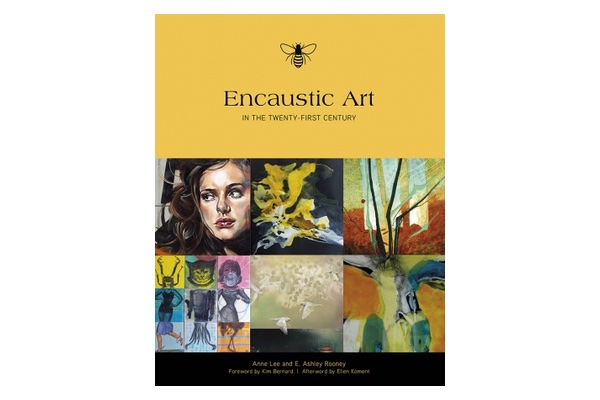An Exercise in Range
by Richard Malinsky, Arts Editor

Encaustic Art in the Twenty-First Century By Anne Lee and E. Ashley Rooney. Schiffer Publishing, Ltd., 2016. $59.99.
The precise temperature regulation of the wax in the honeycomb is the same basic principle applied to the encaustics medium. With the addition of damar resin and color pigments, today’s artists can brush or pour molten wax onto a support one or more layers thick.
Anne Lee’s introduction to Encaustic Art in the Twenty-First Century documents the earliest application of encaustic wax paint, dating back to Ancient Greece. Encaustic painting first flourished in Greece and Egypt, spread to Rome, weathered a decline in the Middle Ages, and enjoyed a revival in mid-eighteenth century Europe and twentieth century America. By 1990, educational outreach began to expand the popularity and interest in encaustics, and technical data became easier to share via the Internet. New York museums and galleries began to exhibit work by encaustic artists, and in 1999 the Montclair Art Museum in New Jersey held the first museum exhibition entirely devoted to encaustic.

This lush, profusely illustrated coffee table book profiles 79 contemporary American and Canadian artists working in encaustics. Each artist is represented by four to five full-color works; and brief accompanying texts detail their influences, techniques, and personal feelings about this unique medium. As a way of perhaps corralling the diverse approaches to the medium, Lee and Rooney organized chapters by regions rather than technique: New England, The Mid-Atlantic, The South, The Midwest, The West, The Pacific West, and Canada. And techniques vary widely—from the opaque to the translucent, layering from thick to thin, or hard to soft. The malleability of wax allows for even greater diversity; the additive of molding, shaping, and embedding of objects, the subtractive of scraping or incising.
Ellen Koment’s approach is largely through pouring and layering. She pours successive layers of overlapping pigmented molten wax onto paper, then lifts and bends the paper so that the colored wax flows into patterns of transparent, translucent and opaque lyrical color forms:

Another artist, Jeffrey Hirst, employs actual assemblage to his encaustics, juxtaposing man-made architectonic structure and natural found materials to explore how these two forces coexist in an urban environment:

At the other end of the spectrum you might find Joan Giordano, who prefers working with encaustics to build textures that appear woven, layered, and etched. Much of her work embodies various kinds of paper with hints of printed images and words that evoke history and the passage of time:

Encaustic Art proves a rich resource for how contemporary American and Canadian artists are mining the medium of encaustics to creative, and at times quite innovative, effects.
Copyright 2016 Woven Tale Press LLC. All Rights Reserved.

